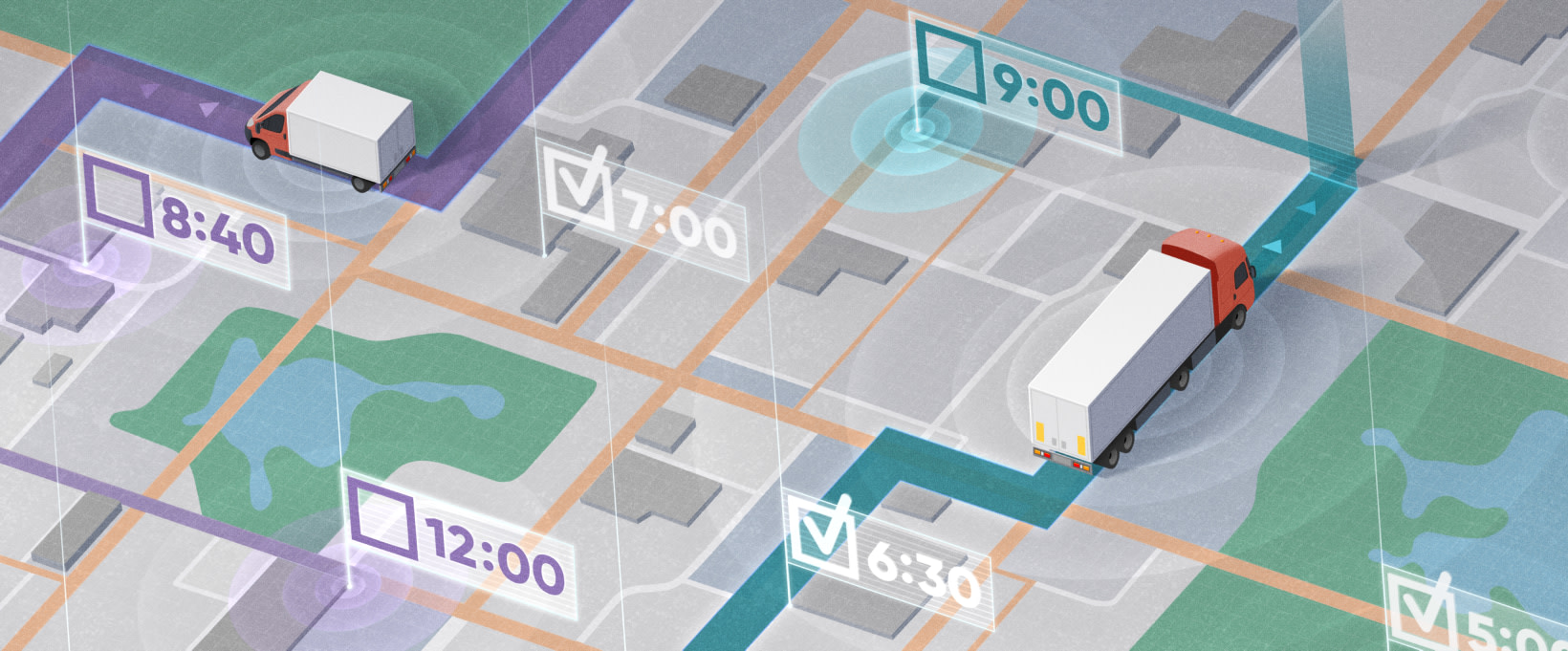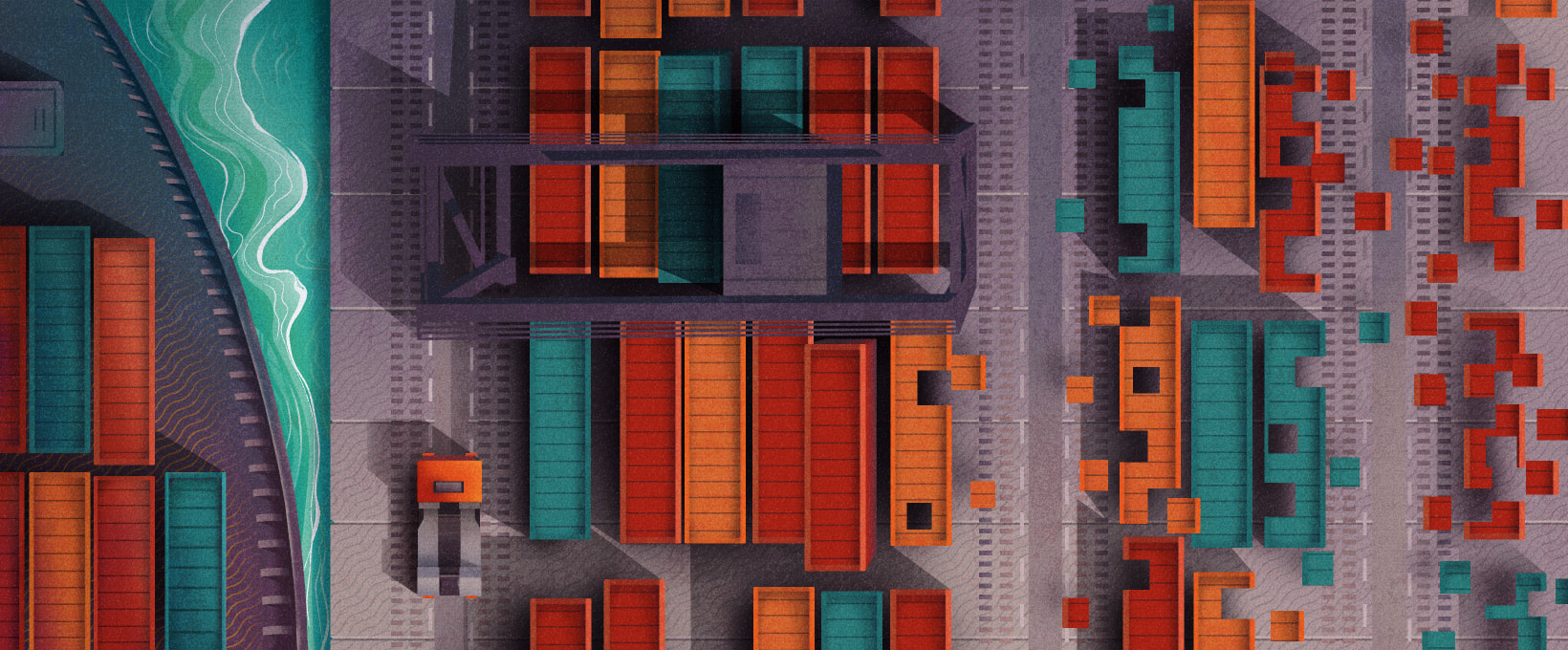- Tasks performed by logistics software
- Stages of logistics software development
- Advantages of logistics software
- Conclusion
Digital transformation has enabled companies to better manage their supplies and optimize their operations. Now you can organize logistics operations with a couple of programs. Experts in custom enterprise logistic software development from Andersen are sharing how to develop reliable logistics software that will increase your enterprise’s profits.
Tasks performed by logistics software
Logistics software is a program that solves the following issues of an organization:
- manages client orders (ERP or AOM);
- coordinates the work of warehouses (WMS);
- manages transport (TMS);
- improves planning (APS).
A logistics business is usually segmented. Different departments are loosely connected with each other, which causes delays in goods’ delivery, downtime, and breakdowns. Logistics applications help to unite separate departments into a single system and make their work transparent. The development of logistics management software that will make it possible to transfer information from one department to another is a safe bet.
Stages of logistics software development
Building logistics software has its peculiarities and consists of the following stages.
Stage 1. Choosing the type of logistics management software.
Logistics applications vary in purpose, functionality, and end-users. Therefore, before starting the development, it is recommended to decide on what the needs of your business are.
- A system for managing a vehicle fleet
All information about driving speed, stops, locations, and fuel consumption is recorded. Managers use this data to save resources, choose the best routes, and predict vehicle repairs.
Typically, fleet management systems include a mobile app for a driver, integrated with the administrator's website. The latter gives tasks to the driver, monitors the nature of their driving, warns of upcoming maintenance, and assigns other missions.
Along with the basic functions, you can connect additional ones. For example, EllisCar - an application created by Andersen - provides a means to monitor driving safety. Algorithms analyze how fast the vehicle is moving, whether the driver accelerates and slows down smoothly, and whether there is a risk of accidents due to the driving style.
- A web/mobile application for logistics companies
Trucks may not always be fully equipped. Sometimes they drive half empty, which is unprofitable for logistics companies. To avoid such a money loss, carriers use different transport platforms to take additional cargo, making transportation more cost-effective. These software programs combine freight forwarders, carriers, sea lines, consignors, and consignees to find the optimal logistics solution.
Freight forwarders list their cargo, weight, size, and cost of cargo and receive the best offers from carriers located nearby. The nearest available drivers accept the application. When a driver picks up goods, the customer receives a notification about the delivery status. The location of the vehicle can be tracked through GPS. When the cargo reaches its destination, the program will send an invoice to the customer.
- Application for managing warehouses
The organization of the warehouse work determines how quickly employees will load trucks with goods and send them where required.
To make warehouse processes run like clockwork, additional IT tools are needed - for example, barcode scanning applications, IoT devices, warehouse management systems, and so on. This will enable managers to know for sure where particular goods are located and in what quantity.
Through such software, employees can see which goods are running out, when to update the range of products, and when to prepare them for shipment. Thus, it is possible to quickly load the arriving trucks and send them to their destination.
When a customer knows what type of application they need, it is easier for the development team to estimate the scope of work and its cost. Programmers will tell you how to improve these tools and adapt them specifically to your business.
Stage 2. Choosing a team for logistics management software development.
Usually, outsourcing companies select specialists for the project team themselves according to a customer’s needs. Andersen offers a wide range of technologies and experts on every issue - from business analysis to technical support.
Stage 3. Preparing business requirements.
During the Discovery phase, the customer shares their business idea and vision of the future software with the development team. This information is needed for a Business Analyst to prepare software requirements and estimate project costs.
Stage 4: Approving terms and project costs.
The cost of a project depends on the pricing model chosen by the customer, the composition of the development team, and the technology stack.
Stage 5. Launching a minimum viable product.
After all the preparatory work, the development team creates a minimum viable product (MVP). This is an initial version of the program with the most important functions. Such a product can enter the market while the team is gradually refining it, updating its versions till the end of the project.
Stage 6. Implementing extended functions.
An MVP is finalized based on both requirements and user feedback. Based on the clients’ opinions, developers can offer the customer new functions to improve the software and make it as convenient and useful as possible. For example, such streamlined features can be a chat platform, a GPS tracker for trucks, an archive of shipments, a changing order status, digitization of documentation, and so on.
Advantages of logistics software
With logistics software, enterprises gain the following benefits:
- save money and time, getting the opportunity to plan the delivery of goods more accurately, optimize routes, and calculate fuel costs;
- minimize hard-copy document workflow;
- monitor vehicles in real-time via GPS, which allows for more efficient delivery management;
- simplify the shipping of goods by using mobile warehouse management solutions with a cargo scanning system.
Conclusion
Enterprises' success in the market depends on how well their logistics are organized. Custom enterprise logistic software helps companies set up their processes - from warehouse operations to cargo delivery.
If you are planning to develop logistics software, contact us for the digital transformation of your business. Andersen’s team has experience in building applications for vehicle fleet management, car rental, warehouse management, and other IT solutions that take businesses to the next level.







